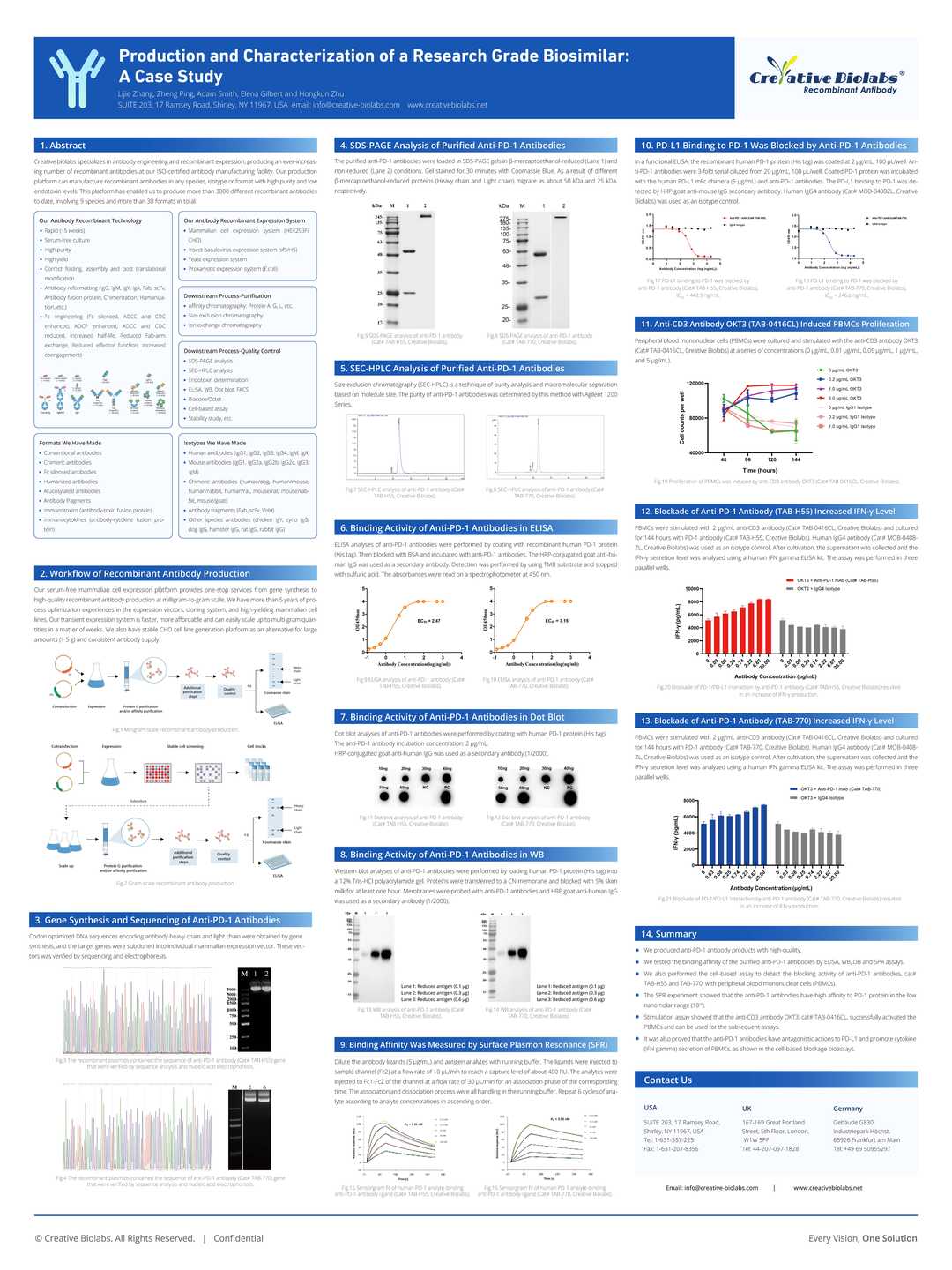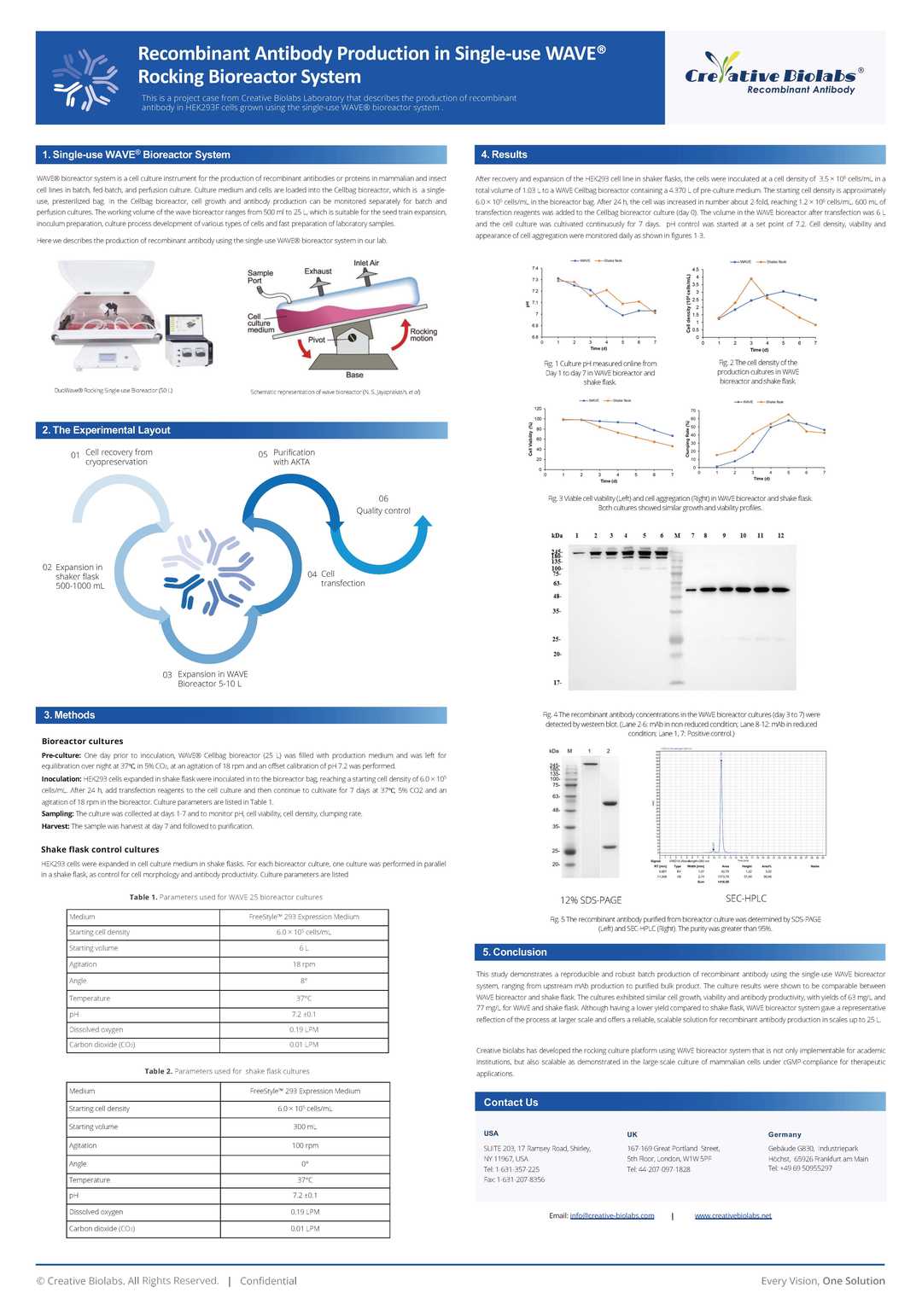Human Anti-MAPT (clone IPN002) scFv-Fc Chimera
CAT#: VS-0325-FY121
The anti-MAPT scFv-Fc antibody targets Microtubule-Associated Protein Tau (MAPT), a protein implicated in neurodegenerative diseases such as Alzheimer's disease. It is designed to bind specifically to abnormal forms of MAPT, potentially aiding in the clearance of toxic aggregates. This antibody has potential applications in the treatment and diagnosis of tauopathies.






Specifications
- Host Species
- Human
- Type
- Human IgG1, scFv-Fc
- Specificity
- Human MAPT
- Species Reactivity
- Human
- Clone
- IPN002
- Applications
- ELISA, Flow Cytometry
- Related Disease
- Alzheimer's disease
Product Property
- Purity
- >95% as determined by SDS-PAGE
- Concentration
- Please refer to the vial label for the specific concentration.
- Storage
- Centrifuge briefly prior to opening vial. Store at +4°C short term (1-2 weeks). Aliquot and store at -20°C long term. Avoid repeated freeze/thaw cycles.
- Shipping
- Ice packs
Target
- Alternative Names
- Microtubule Associated Protein Tau; G Protein Beta1/Gamma2 Subunit-Interacting Factor 1; Protein Phosphatase 1, Regulatory Subunit 103; Neurofibrillary Tangle Protein; Paired Helical Filament-Tau; PHF-Tau; MAPTL; MTBT1; TAU
- Gene ID
- 4137
- UniProt ID
- P10636
- Long Name
- Microtubule Associated Protein Tau
- Cellular Localization
- Cell membrane; Cell projection; Cytoplasm; Cytoskeleton; Membrane; Microtubule; Secreted
- Post Translation Modifications
- Phosphorylation at serine and threonine residues in S-P or T-P motifs by proline-directed protein kinases, and at serine residues in K-X-G-S motifs by MAP/microtubule affinity-regulating kinase (MARK1, MARK2, MARK3 or MARK4), causing detachment from microtubules, and their disassembly.
Phosphorylation decreases with age.
PHF-tau can be modified by three different forms of polyubiquitination. 'Lys-48'-linked polyubiquitination is the major form, 'Lys-6'-linked and 'Lys-11'-linked polyubiquitination also occur.
O-glycosylated. O-GlcNAcylation content is around 8.2%.
Glycation of PHF-tau, but not normal brain TAU/MAPT. Glycation is a non-enzymatic post-translational modification that involves a covalent linkage between a sugar and an amino group of a protein molecule forming ketoamine. Subsequent oxidation, fragmentation and/or cross-linking of ketoamine leads to the production of advanced glycation endproducts (AGES). Glycation may play a role in stabilizing PHF aggregation leading to tangle formation in AD.
- Protein Refseq
- NP_001116538.2; NP_001116539.1; NP_001190181.1
- Function
- Promotes microtubule assembly and stability, and might be involved in the establishment and maintenance of neuronal polarity (PubMed:21985311).
The C-terminus binds axonal microtubules while the N-terminus binds neural plasma membrane components, suggesting that tau functions as a linker protein between both (PubMed:21985311, PubMed:32961270).
Axonal polarity is predetermined by TAU/MAPT localization (in the neuronal cell) in the domain of the cell body defined by the centrosome. The short isoforms allow plasticity of the cytoskeleton whereas the longer isoforms may preferentially play a role in its stabilization.
Customer Review
There are currently no Customer reviews or questions for VS-0325-FY121. Click the button above to contact us or submit your feedback about this product.
Submit Your Publication
Published with our product? Submit your paper and receive a 10% discount on your next order! Share your research to earn exclusive rewards.
Downloadable Resources
Download resources about recombinant antibody development and antibody engineering to boost your research.
Product Notes
This is a product of Creative Biolabs' Hi-Affi™ recombinant antibody portfolio, which has several benefits including:
• Increased sensitivity
• Confirmed specificity
• High repeatability
• Excellent batch-to-batch consistency
• Sustainable supply
• Animal-free production
See more details about Hi-Affi™ recombinant antibody benefits.
Datasheet
MSDS
COA
Certificate of Analysis LookupTo download a Certificate of Analysis, please enter a lot number in the search box below. Note: Certificate of Analysis not available for kit components.
Isotype Control
- CAT
- Product Name
Secondary Antibody
- CAT
- Product Name
See other products for "MAPT"
Select a product category from the dropdown menu below to view related products.
| CAT | Product Name | Application | Type |
|---|---|---|---|
| PSBL-305 | Chicken Anti-MAPT Recombinant Antibody; scFv Fragment | WB, ELISA, FuncS | Chicken scFv |
| PSBL-340 | Mouse Anti-MAPT Recombinant Antibody (clone AT8); scFv Fragment | ELISA, FuncS | Mouse scFv |
| PSBL-674 | Chicken Anti-MAPT Recombinant Antibody (clone pT231/pS235_1); scFv Fragment | WB, ELISA, FACS, Block | Chicken scFv |
| PSBL-705 | Mouse Anti-MAPT Recombinant Antibody (clone DC8E8); scFv Fragment | WB, IF, FuncS | Mouse scFv |
| NS-090CN-S(P) | Mouse Anti-MAPT Recombinant Antibody; scFv Fragment (NS-090CN-S(P)) | WB, ELISA, IHC, IP | Mouse scFv |
| CAT | Product Name | Application | Type |
|---|---|---|---|
| PABL-680 | Chicken Anti-MAPT Recombinant Antibody (clone pT231/pS235_1) | WB, ELISA, FACS, Block | Chicken IgY |
| HPAB-N0170-YC | Human Anti-MAPT Recombinant Antibody (HPAB-N0170-YC) | ELISA, Inhib | Humanized IgG |
| HPAB-N0171-YC | Human Anti-MAPT Recombinant Antibody (HPAB-N0171-YC) | ELISA, FuncS | Human IgG4 |
| HPAB-N0172-YC | Mouse Anti-MAPT Recombinant Antibody (HPAB-N0172-YC) | ELISA | Mouse IgG |
| HPAB-N0173-YC | Mouse Anti-MAPT Recombinant Antibody (HPAB-N0173-YC) | ELISA | Mouse IgG |
| CAT | Product Name | Application | Type |
|---|---|---|---|
| BRD-0733MZ | Chicken Anti-TAU Polyclonal IgY | ICC, IF, IHC, WB | Chicken antibody |
| CAT | Product Name | Application | Type |
|---|---|---|---|
| PABX-174 | Recombinant Mouse Anti-Tau5 Antibody | WB, ELISA, Neut, FuncS | IgG |
| PABX-174-S (P) | Recombinant Mouse Anti-Tau5 Antibody scFv Fragment | WB, ELISA, Neut, FuncS | scFv |
| PABX-174-F (E) | Recombinant Mouse Anti-Tau5 Antibody Fab Fragment | WB, ELISA, Neut, FuncS | Fab |
| CAT | Product Name | Application | Type |
|---|---|---|---|
| MOR-2164 | Hi-Affi™ Recombinant Rabbit Anti-MAPT Monoclonal Antibody (DS2164AB) | IHC-P | IgG |
| MOR-4513 | Hi-Affi™ Recombinant Rabbit Anti-MAPT Monoclonal Antibody (TH21DS) | WB, IHC-P, FC | IgG |
| MOR-4714 | Hi-Affi™ Recombinant Rabbit Anti-MAPT Monoclonal Antibody (TH228DS) | WB, IF, ICC, IHC-P, FC | IgG |
| MOR-4715 | Hi-Affi™ Recombinant Rabbit Anti-MAPT Monoclonal Antibody (TH229DS) | WB, IF, ICC, IHC-P | IgG |
| CAT | Product Name | Application | Type |
|---|---|---|---|
| NS-090CN-F(E) | Mouse Anti-MAPT Recombinant Antibody; Fab Fragment (NS-090CN-F(E)) | WB, ELISA, IHC, IP | Mouse Fab |
| HPAB-0305CQ-F(E) | Mouse Anti-Tau Recombinant Antibody (clone DC-11); Fab Fragment | IF, IHC, WB | Mouse Fab |
| HPAB-672-FY-F(E) | Mouse Anti-MAPT Recombinant Antibody; Fab Fragment (HPAB-672-FY-F(E)) | WB, ELISA | Mouse Fab |
| HPAB-679-FY-F(E) | Human Anti-MAPT Recombinant Antibody; Fab Fragment (HPAB-679-FY-F(E)) | WB, ELISA | Human Fab |
| HPAB-680-FY-F(E) | Mouse Anti-MAPT Recombinant Antibody; Fab Fragment (HPAB-680-FY-F(E)) | ELISA | Chimeric (human/mouse) Fab, λ |
| CAT | Product Name | Application | Type |
|---|---|---|---|
| VS-0424-XY182 | AbPlus™ Anti-MAPT Magnetic Beads (VS-0424-XY182) | IP, Protein Purification |
| CAT | Product Name | Application | Type |
|---|---|---|---|
| VS-0525-XY4255 | Anti-MAPT Immunohistochemistry Kit | IHC | |
| VS-0525-XY4256 | Anti-Mouse MAPT Immunohistochemistry Kit | IHC | |
| VS-0525-XY4257 | Anti-Rat MAPT Immunohistochemistry Kit | IHC |
| CAT | Product Name | Application | Type |
|---|---|---|---|
| VS-0525-YC120 | Recombinant Anti-MAPT (AA 220-224 x AA 506-511) Biparatopic Antibody, Tandem scFv (Clone 13A6 x Clone 19G10) | ELISA | Tandem scFv |
| VS-0525-YC121 | Recombinant Anti-MAPT (AA 506-511 x AA 537-541) Biparatopic Antibody, Tandem scFv (Clone 19G10 x Clone 10H8) | ELISA | Tandem scFv |
| CAT | Product Name | Application | Type |
|---|---|---|---|
| VS-0625-YC216 | Recombinant Anti-MAPT Eliminating Antibody, pH-Sensitive (VS-0625-YC216) | Antigen-Sweeping In Vivo. | Mouse IgG |
Popular Products

Application: ELISA, IP, FC, FuncS, Neut, IF, ICC

Application: ELISA, FC, IP, FuncS, IF, Neut, ICC

Application: IP, IF, FuncS, FC, Neut, ELISA, ICC

Application: FC, IP, ELISA, Neut, FuncS, IF, WB

Application: WB, ELISA, FC, IP, FuncS, IF, Neut

Application: FuncS, IF, Neut, ELISA, FC, IP, ICC

Application: FC, IB, Block, Inhib, FuncS, ELISA, FACS, IP, IF

Application: ELISA, FC

Application: WB, IHC, ELISA, FC

Application: Neut, FC, IHC-Fr, IP, BA

Application: ELISA, Neut
For research use only. Not intended for any clinical use. No products from Creative Biolabs may be resold, modified for resale or used to manufacture commercial products without prior written approval from Creative Biolabs.
This site is protected by reCAPTCHA and the Google Privacy Policy and Terms of Service apply.




















